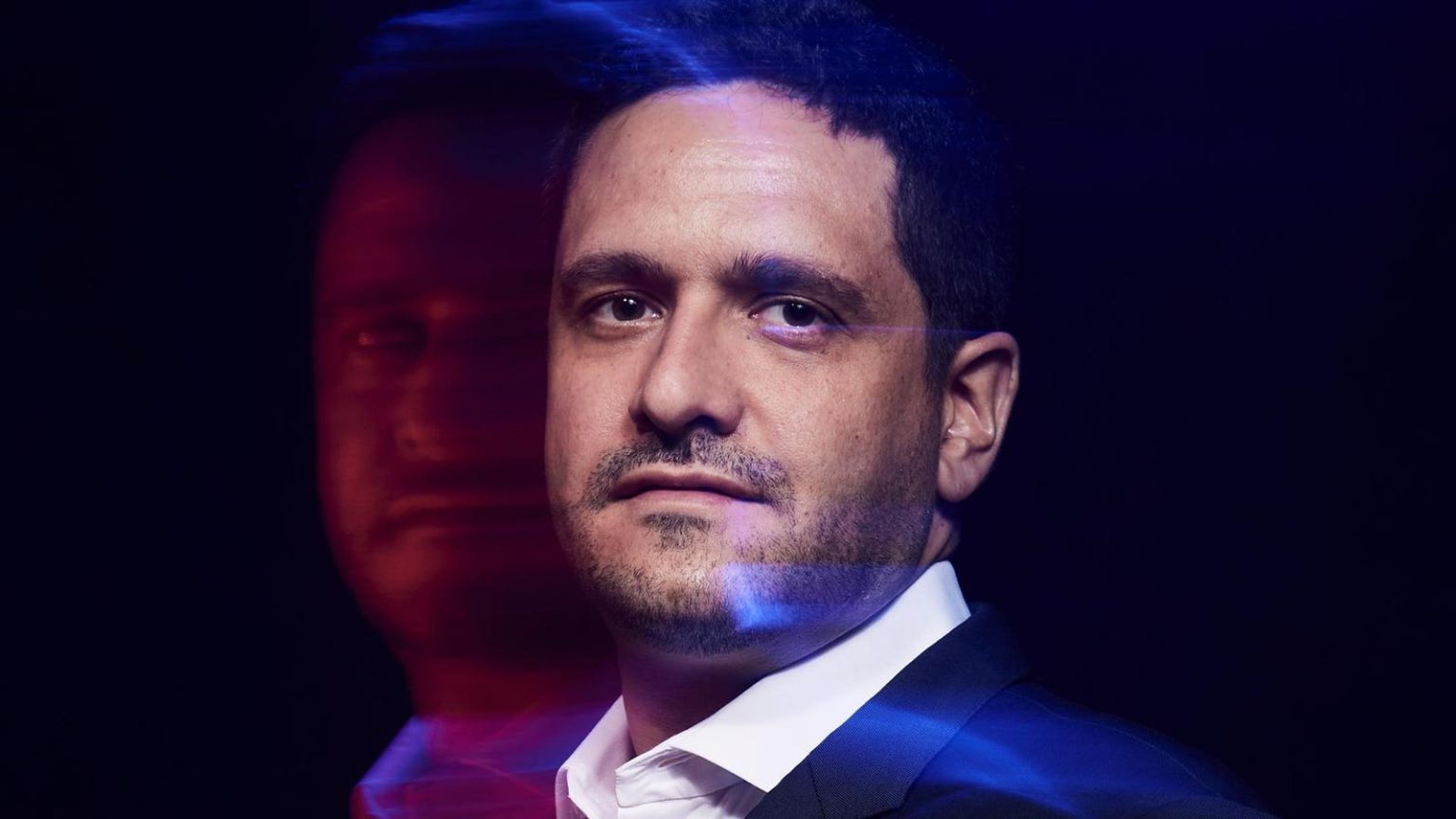The startup has 12 FDA-approved algorithms to flag problems, agreements with more than 1,500 U.S. hospitals, and big plans to work with drug companies to reduce roadblocks in healthcare.
By Amy Feldman, Forbes Staff
On October 26, while visiting New York City for a gala, Jess Allison collapsed on the street. The 41-year-old was unable to speak or move her right side. A customer at a nearby outdoor cafe helped her call 911 and an ambulance took her to Mount Sinai West in midtown.
The ER doctor told her they thought she’d had a stroke, and sent her to get a CT scan. Soon, she was on the operating table and a Mount Sinai neurosurgeon was talking her through the procedure. “I could see flashes of light in my brain. It was pretty eerie,” she told Forbes. “He said, ‘We’re almost done, we’re almost done,’ and almost immediately I could feel my right hand lifting up and I could feel my toes and ankle moving.”
Allison is already back at work as a fundraiser for the Melanoma Research Foundation in Washington, D.C., with only minimal side effects from a type of stroke known as a large vessel occlusion, in which one of the large cerebral arteries gets blocked. Though she didn’t know it at the time, part of the reason Mount Sinai was able to treat her so quickly was due to AI-based software from a startup called Viz.ai. Speed is key with strokes, which hit nearly 800,000 Americans a year, because each minute of delay results in the death of some 2 million brain cells, leaving many survivors disabled, struggling in rehab or living in nursing homes. Viz.ai’s algorithms compare images from patients’ CT scans against its database to help doctors shave crucial minutes off diagnosis and surgery-prep time so they can prioritize patients with strokes and other difficulties.
“It’s pretty clear that AI can accurately detect disease, and it’s getting to the point that it can robustly predict disease progression,” Chris Mansi, the neurosurgeon who’s the company founder and CEO, told Forbes.
San Francisco-based Viz.ai is at the forefront of medical companies using artificial intelligence to improve care for patients. An alumnus of the 2021 Forbes Next Billion-Dollar Startups list, it’s raised a total of $254 million from firms that include Insight Partners, Kleiner Perkins, Scale Venture Partners and Tiger Global at a valuation of $1.2 billion. Annual recurring revenue, or ARR, a metric that’s typically used by subscription-based software companies, has been roughly doubling each year, and is expected to reach $100 million in 2024, from $12 million in 2020. Yearly revenue for accounting purposes is typically lower than ARR, and in Viz’s case should come in around $40 million this year and $60 million to $70 million next year. The company is not yet profitable.
Perhaps more importantly, the seven-year-old company has now signed on more than 1,500 hospitals, including the Cleveland Clinic, Mount Sinai, Tenet Healthcare and HCA, that cover roughly two-thirds of the U.S. population. It has also become the rare AI company to receive both approval by the FDA for its algorithms and by Medicare for reimbursement.
But medical AI is more regulated and harder to break into than some other areas of technology, and competition has become tougher since Viz started. Having been accepted by hospitals for its image-based AI, Viz is now expanding into generative AI in a previously unannounced move that includes a pilot program with Mount Sinai and other hospitals. It will summarize patients’ medical records and scour academic literature to find relevant information that might otherwise be missed. Summarization does not require FDA approval, but if Viz were to use text-based AI for clinical recommendations — as it ultimately hopes — it would need to get regulators’ okay.
At the same time, Viz has begun working with drug companies and medical-device manufacturers. Those companies are looking for ways to launch their products faster and more efficiently, something Mansi said has become increasingly important due to drug-pricing changes in the 2022 Inflation Recovery Act.
Ultimately, Mansi hopes that the combination of image-based AI and generative AI will allow it to detect 100 diseases. In addition to neurology and cardiology, Viz sees opportunities in oncology, for example in lung cancer, which is often missed on early X-rays.
“We think every major disease could benefit,” Mansi said, “and it will become just the norm in healthcare.”
Entrepreneur Neurosurgeon
Mansi, 39, grew up in Newcastle, in northeast England, and went to medical school at the University of Cambridge. “My grandmother always wanted me to be a doctor, and to be the local GP in Newcastle,” he said. In medical school, he fell in love with neurology, and then with neurosurgery, one of the most challenging specialties. For five years, he did brain surgeries at top London hospitals, Queen Square and King’s College. He saw firsthand how a surgery could go well, yet the patient would die or become disabled because it had taken too much time getting them to the operating room.
In 2012, Mansi started a business called Edusurg to help junior surgeons prepare for exams online. While small, that company continues to operate. Two years later, he quit his neurosurgery job and came to the U.S. for an MBA at Stanford. He played around with “every technology I could find,” including printing brains in 3-D to help surgeons practice operations and creating a device that could stimulate cranial nerves.
At Stanford in 2016, Mansi met an Israeli machine-learning postdoc named David Golan. Golan, who has since left the company, had recently been discharged from the hospital after a suspected stroke. The two bonded over the lack of data available to make better medical decisions. They pitched their idea to use machine learning and medical imaging to improve stroke care in a class run by former Google CEO Eric Schmidt, who offered seed funding through his firm Innovation Endeavors.
At the time, artificial intelligence wasn’t as popular a process as it is now. And medicine, with its regulatory hurdles, life-or-death situations and gigantic hospital bureaucracies, might not have seemed the easiest place to start. “At the time, it was one of those weird AI companies,” said Mamoon Hamid, a partner at Kleiner Perkins, who first bonded with Mansi at a venture-capital dinner in Colorado and invested in the company in 2018. “I had to get comfortable with the idea that this was compelling to the provider and to the system.”
FDA Approval
To develop its first stroke algorithm, Viz partnered with two hospitals, Grady in Atlanta and Erlanger in Chattanooga, Tennessee. Viz’s software cross-referenced CT images of a patient’s brain with its database of scans to find early signs of large vessel occlusion strokes like the one that Jess Allison suffered and which a shockingly small percentage of patients receive appropriate treatment for. It alerted doctors, who could see the images on their phones, cutting precious minutes off the time it would otherwise take to get that patient into surgery.
Mansi was at Erlanger for an early test of the algorithm when it pinged its first alerts. They were false alarms, and Viz had to go back and recalibrate its algorithm. Working with hospitals and doctors to develop the product “before it was fully baked,” Mansi said, was especially important “to focus on the real need, versus technological determinism, which doesn’t work in healthcare.”
Today, the company has 12 FDA-approved algorithms, for diseases that include stroke, hypertrophic cardiomyopathy (a thickening of the heart muscle that can cause sudden cardiac death) and pulmonary embolism (a sudden blockage of the arteries that send blood to the lungs). It received its first approval for Medicare reimbursement in 2020. Viz’s cost to a hospital depends on its size and how many diseases they target; a small hospital might pay just $50,000 a year, but a larger group could spend more than $1 million.
“There are giant blind spots in the way medical care gets delivered in the U.S.,” said J Mocco, a Mount Sinai neurosurgeon who’s director of its Cerebrovascular Center. While the shortcomings of rural healthcare are well-documented, the problem extends to urban areas, too. “This is why AI is going to be crucial,” he said.
Failed Follow-Ups
When Mocco first encountered Viz around 2016, he thought it was “a little gimmicky,” but after a while he became impressed with the interface. Now, he not only uses it but has become a consultant to the company. He likes that the app will beep, allowing doctors to immediately prepare for surgery rather than waiting for a busy emergency-room radiologist to call about a patient’s possible stroke. “The AI helps level the playing field by helping us triage,” he said.
Iraj Nikfarjan, a neurologist at HCA’s hospital in Ocala, Florida, said that in recent days he was able to review the first scans of a woman who arrived at the ER after collapsing in Walmart in just 12 minutes and mobilize the hospital to treat her for stroke. “I can access those images in my cell phone wherever I am and plan my procedure,” he said.
While AI has been criticized for introducing errors and biases, Mansi said that most of its image-based algorithms are around 95% accurate, far higher than the average doctor who’s not a specialist. “We estimate that on average across all the diseases we care for, less than 20% of the time a patient with a particular disease goes down the [treatment] pathway that would be considered the ideal one,” he said. “It’s about 80% where that doesn’t happen.”
Consider aneurysms. Misdiagnoses occur in up to one-quarter of patients who initially seek medical attention with a primary-care physician, emergency room or walk-in clinic. Viz figures that its aneurysm algorithm can help improve that performance and route patients to the right specialists. In a study of 1,200 angiograms at eight stroke centers in Texas, Viz found that 85% of those with aneurysms had not been referred for follow-up, despite the risk.
“The only worry is if AI replaces trained, experienced experts,” Mocco said. “I don’t want that and I don’t see that happening anytime soon. In my view, it’s not about AI telling doctors what to do and thereby making mistakes. It’s more about alerting us.”
Big Pharma
For the past seven years, Viz has focused on hospitals and patients. Today, however, it’s also working with drug companies, medical-device makers and life-sciences firms. Mansi believes that he can use its algorithms and the company’s network in hospitals to help those companies introduce their drugs, therapeutics and devices faster by targeting the patients who might most need them. For drug companies that can spend $1 billion or more to launch a drug, efficiency is critical.
That’s even more true today because of the 2022 legislation, which allows Medicare to renegotiate pill prices after nine years. “If you weren’t going to make money till year 11, and it’s going to be price-reduced in year nine, you have to find a way to accelerate adoption,” Mansi said.
In March, Viz announced a multi-year agreement with Bristol Myers Squibb to deploy an AI algorithm for the detection of hypertrophic cardiomyopathy, the disease that thickens heart muscles. Bristol Myers Squibb has a treatment for the disease called Camzyos (generically known as mavacamten) that it acquired as part of its $13.1 billion purchase of MyoKardia in 2020 and for which it’s trying to build a market. Viz received FDA approval for its algorithm in August.
The company also works with Medtronic, Johnson & Johnson and other major pharmaceutical and medical device makers.
Thickening heart muscles is a serious condition that’s difficult to diagnose. Many patients experience mild symptoms like shortness of breath, and they’ll find themselves shuttled from one specialist to another in search of an answer.
“Some patients go decades without a diagnosis,” said Josh Lampert, an electrophysiologist and medical director of machine learning for Mount Sinai Heart. “We can prevent that, get patients care and in some cases save their lives.” Jayme Strauss, Viz’s clinical director, said that its studies show the algorithm cut the time until diagnosis to a median of 64 days — from five years previously.
Cautious Deployment
At the same time that Viz is rolling out new partnerships with Big Pharma, it’s also focused on the hot area of AI companies: generative AI. “The data shows that it’s crazy not to have these systems in hospitals,” Mansi said. That’s especially true, he said, for patients that may not have access to a world-class research hospital. “You don’t have to be at Mount Sinai or Mass General,” he said. “We can reduce variability in cases and increase the chance that the patient gets the best guideline-directed therapy.”
That’s a bigger and potentially riskier bet. “Care coordination is an intermediary kind of role,” said Thomas Davenport, a professor of information technology at Babson College who’s written about the use of AI in healthcare. It’s not easy for a newcomer to wedge into a space with powerful electronics records providers like Epic Systems on one side and imaging device manufacturers like GE and Siemens on the other, all of whom are looking to increase their analytics, he said. “It just seems like an uncomfortable place to be in the middle right now,” he said.
Work remains to ensure that the use of generative AI in medical decision-making isn’t subject to bias or false results. Mount Sinai’s Lampert said he’s excited about the potential for the technology to help doctors stay up to date on the flood of research studies, but that the hospital is being cautious about deployment. “We already have regulation of AI in healthcare,” Mansi said. “I think you will see an expansion of that, and that will be a good thing.”
For patients like Jess Allison, who without a quick response might’ve been disabled, there’s little reason to think about Viz — except to be grateful when it works. “I’m not super technologically savvy,” she said. “The Google AI stuff that came out earlier this year kind of freaks me out, but this type of AI I love. I didn’t know that was what initially diagnosed me, if you will, but I’m very thankful for it.”
MORE FROM FORBES
Read the full article here





